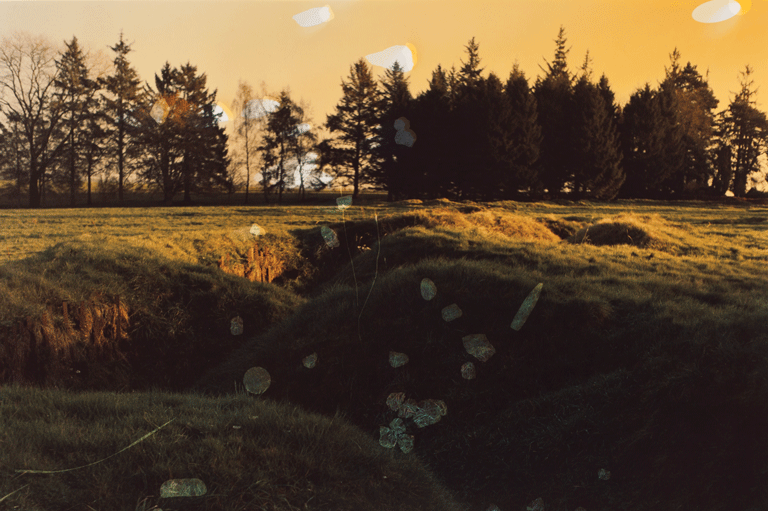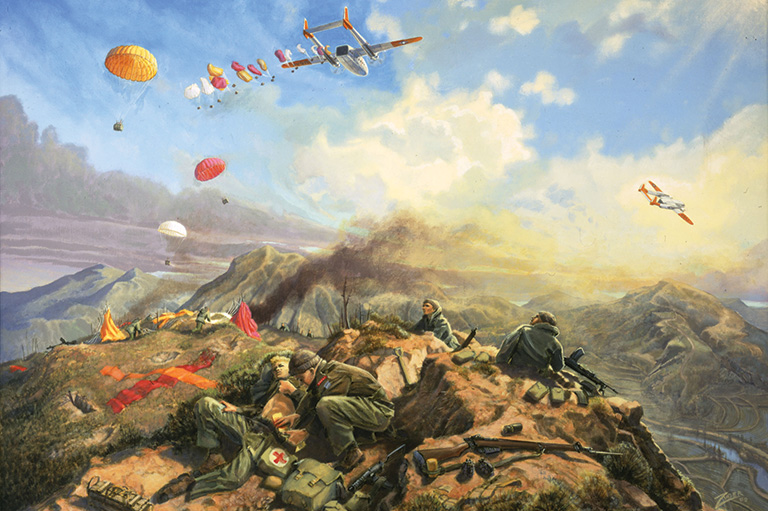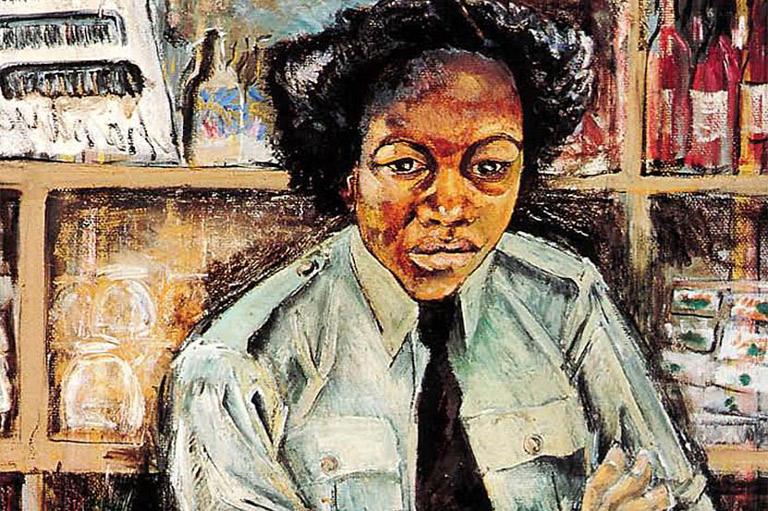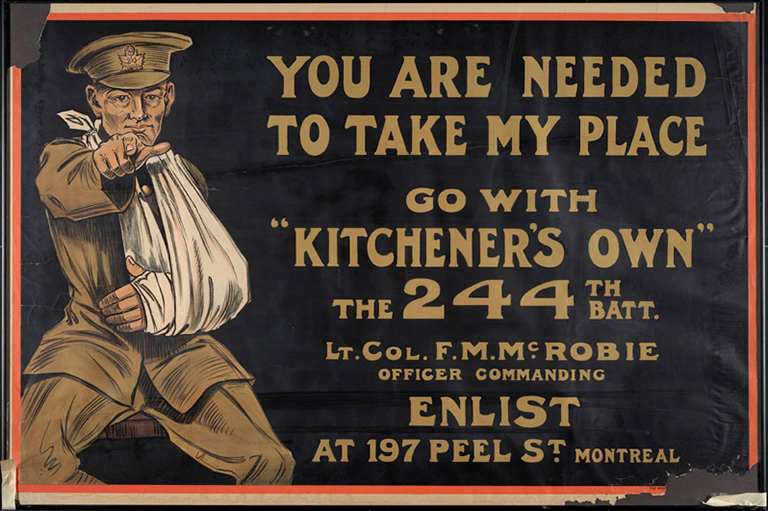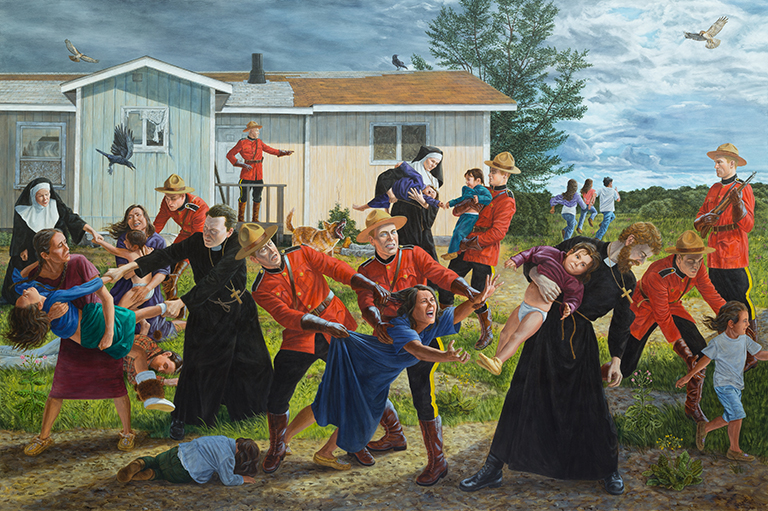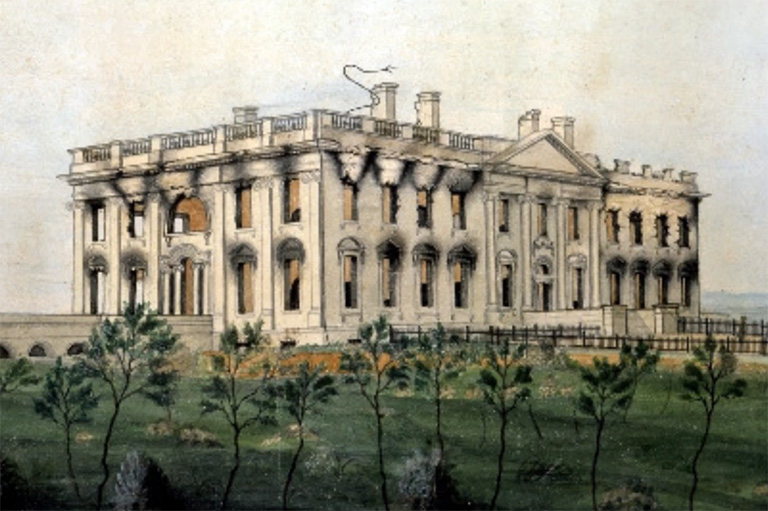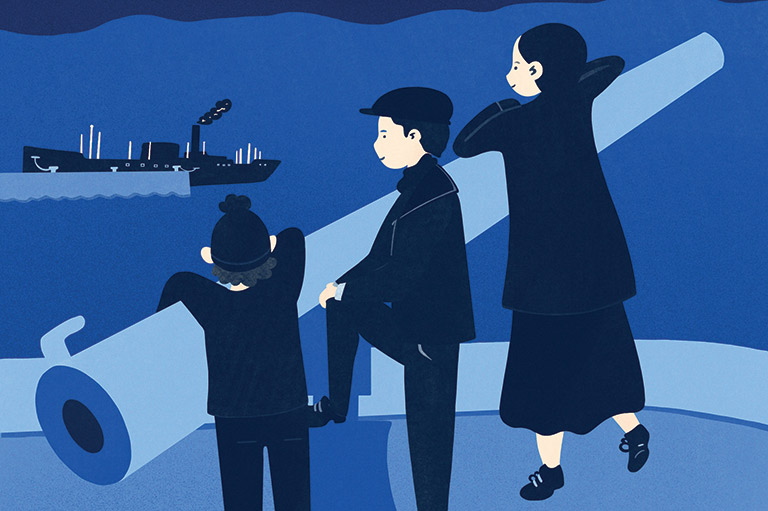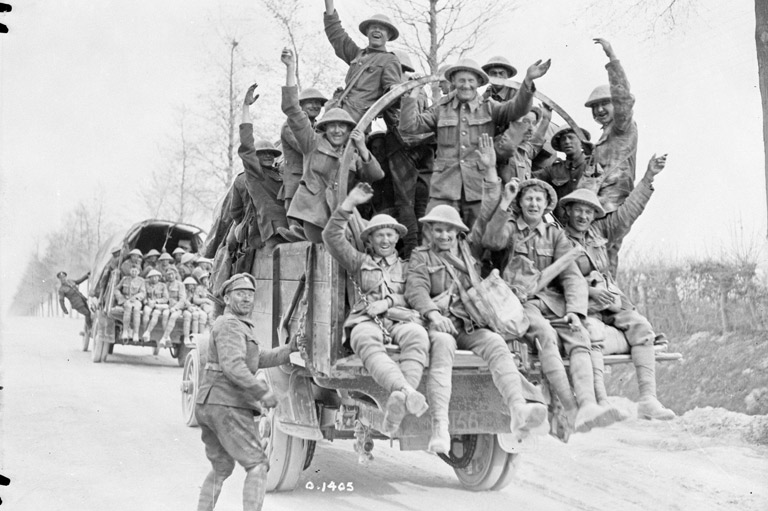Witness: Canadian Art of the First World War
War art is a tricky thing. On the one hand, it runs the risk of glorifying war or making it attractive through the skill of the artist. On the other, it is an unparalleled tool for portraying conflict and its aftermath.
That tension is palpable in an impressive travelling exhibition from the Canadian War Museum in Ottawa.
The show encompasses 54 First World War sketches and paintings from a Canadian perspective, ranging from official works commissioned by Lord Beaverbrook’s Canadian War Memorials Fund and executed by the likes of future Group of Seven members Arthur Lismer, Frederick Varley, and A. Y. Jackson, to those created by ordinary soldiers in the trenches and prisoner of war camps.
-
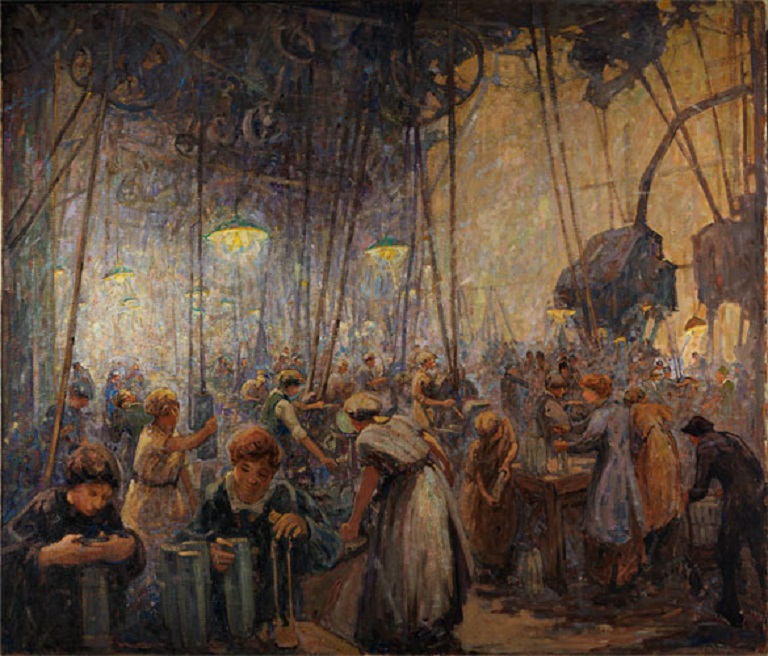 Mabel May was one of four women artists commissioned by the Canadian War Memorials Fund to depict female munitions workers. After visiting a factory, May captures the “avenues of clanking, grinding, clashing machines.”Mabel May © Beaverbrook / Canadian War Museum
Mabel May was one of four women artists commissioned by the Canadian War Memorials Fund to depict female munitions workers. After visiting a factory, May captures the “avenues of clanking, grinding, clashing machines.”Mabel May © Beaverbrook / Canadian War Museum -
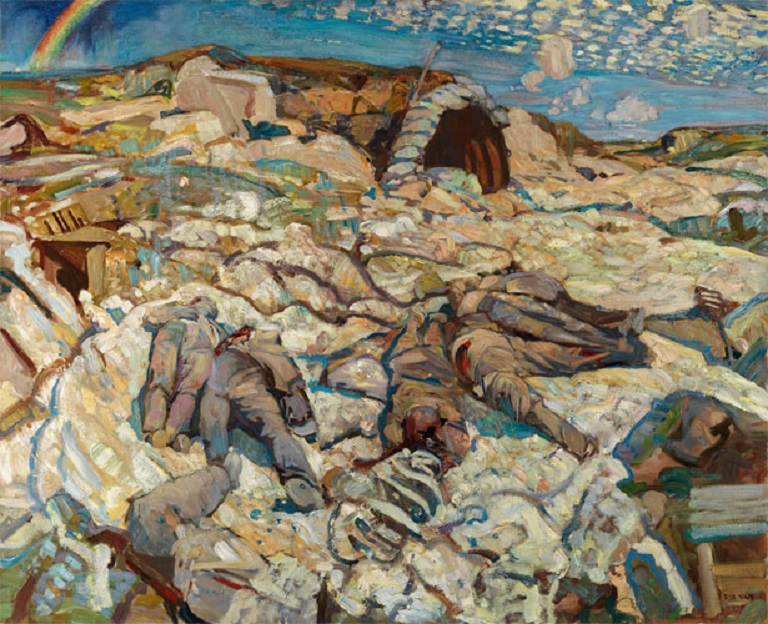 To make Canadians understand the horrors of war, Frederick Varley depicted what the conflict was really like. Although the rainbow could be seen as a symbol of hope, the foreground shows deceased members of a German gun crew.Frederick Varley © Beaverbrook / Canadian War Museum
To make Canadians understand the horrors of war, Frederick Varley depicted what the conflict was really like. Although the rainbow could be seen as a symbol of hope, the foreground shows deceased members of a German gun crew.Frederick Varley © Beaverbrook / Canadian War Museum -
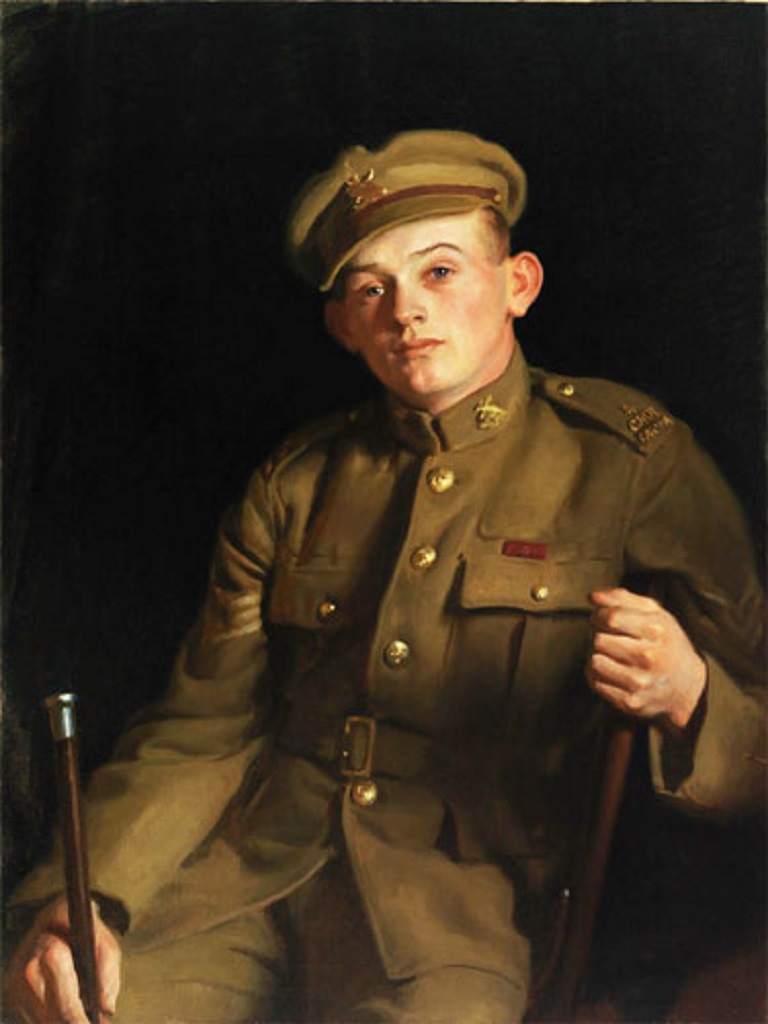 Ernest Fosbery painted Sgt. Tommy Holmes, looking much younger than his 20 years. Around the time Holmes earned his medal, Fosbery recommended that a “Canadian series of portraits be done by Canadian artists.”Ernest Fosbery © Beaverbrook / Canadian War Museum
Ernest Fosbery painted Sgt. Tommy Holmes, looking much younger than his 20 years. Around the time Holmes earned his medal, Fosbery recommended that a “Canadian series of portraits be done by Canadian artists.”Ernest Fosbery © Beaverbrook / Canadian War Museum -
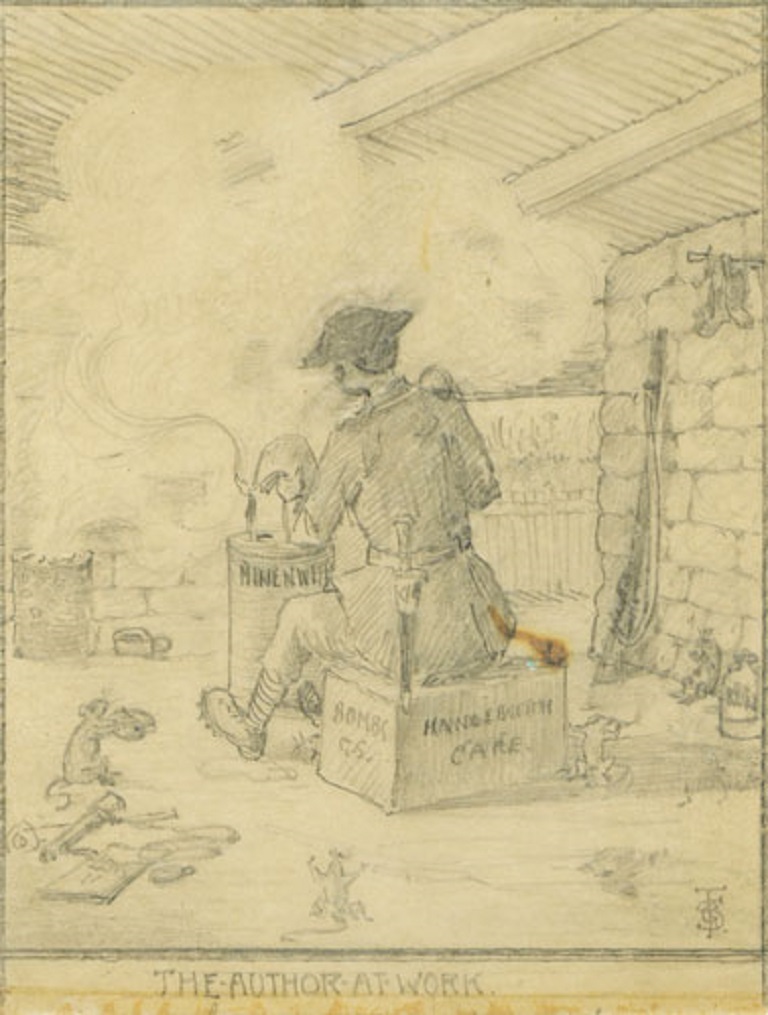 Captain George Sharp drew this whimsical self-portrait, making light of the war... appearing unconcerned by the rambunctious rats around him. In fact, he received the Military Cross and bar for two acts of “great courage and devotion to duty.”George Sharp © Beaverbrook / Canadian War Museum
Captain George Sharp drew this whimsical self-portrait, making light of the war... appearing unconcerned by the rambunctious rats around him. In fact, he received the Military Cross and bar for two acts of “great courage and devotion to duty.”George Sharp © Beaverbrook / Canadian War Museum -
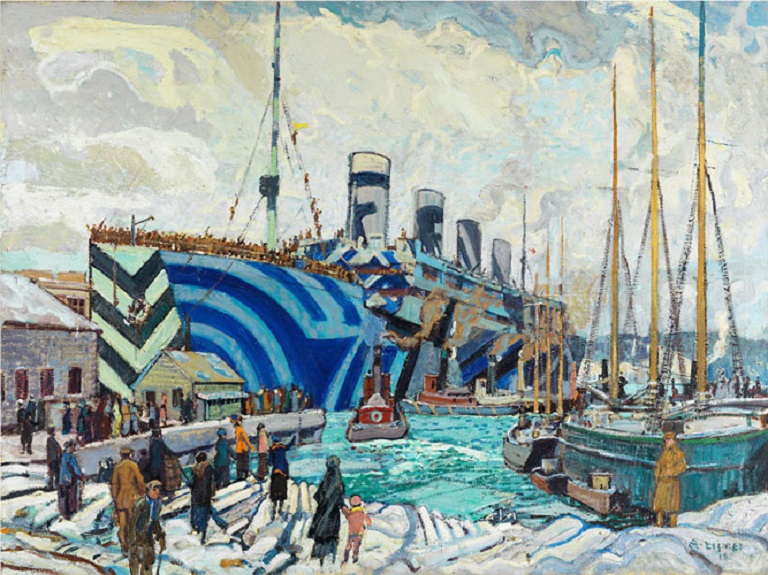 This painting by Arthur Lismer, future Group of Seven artist, depicts the arrival of the Olympic in Halifax Harbour, Nova Scotia, December 14, 1918. The Olympic, a sister ship of the Titanic, transported 200,000 returning soldiers between 1914 and 1919.Arthur Lismer © Beaverbrook / Canadian War Museum
This painting by Arthur Lismer, future Group of Seven artist, depicts the arrival of the Olympic in Halifax Harbour, Nova Scotia, December 14, 1918. The Olympic, a sister ship of the Titanic, transported 200,000 returning soldiers between 1914 and 1919.Arthur Lismer © Beaverbrook / Canadian War Museum -
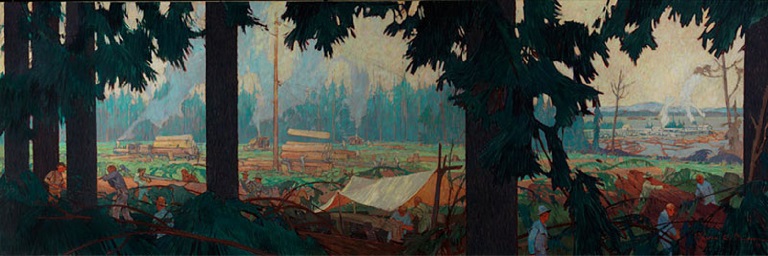 This painting is of spruce harvesting for aircraft production in B.C. Charles Simpson, an artist with the Canadian War Memorials Fund, first painted in England before dwindling resources forced the Fund to assign him to a subject closer to home.Charles Simpson © Beaverbrook / Canadian War Museum
This painting is of spruce harvesting for aircraft production in B.C. Charles Simpson, an artist with the Canadian War Memorials Fund, first painted in England before dwindling resources forced the Fund to assign him to a subject closer to home.Charles Simpson © Beaverbrook / Canadian War Museum -
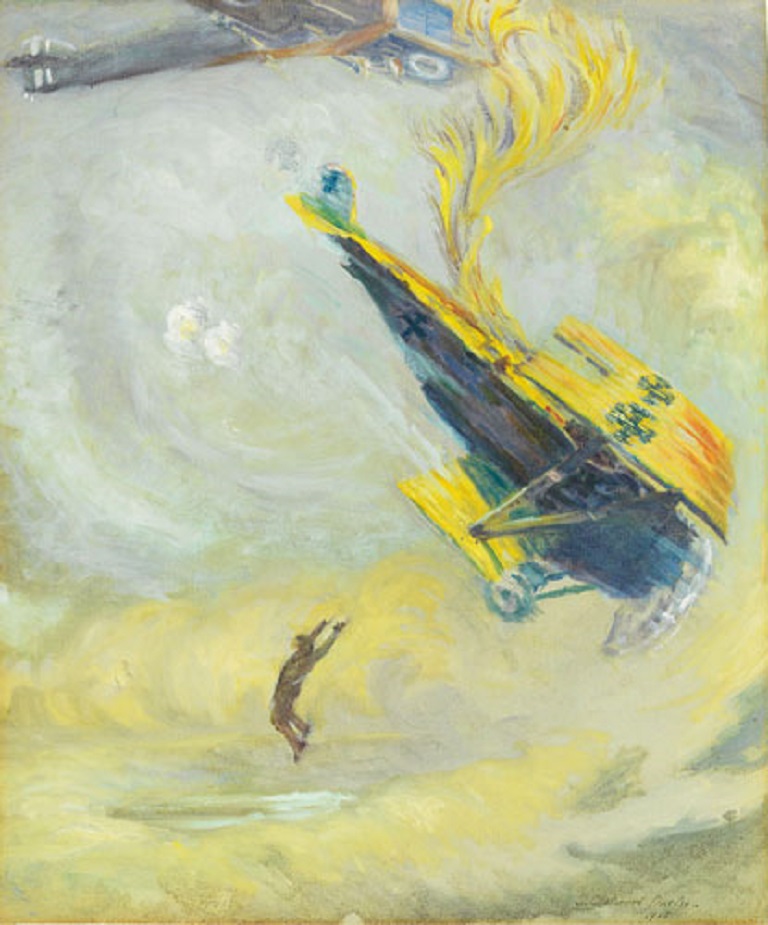 S. Chatwood Burton painted a German pilot leaping from a burning aircraft. We know that he could not survive the fall, since pilots were not issued with parachutes. Above, the British winner of this dogfight continues on. Burton enlisted August 1918.S. Chatwood Burton © Beaverbrook / Canadian War Museum
S. Chatwood Burton painted a German pilot leaping from a burning aircraft. We know that he could not survive the fall, since pilots were not issued with parachutes. Above, the British winner of this dogfight continues on. Burton enlisted August 1918.S. Chatwood Burton © Beaverbrook / Canadian War Museum -
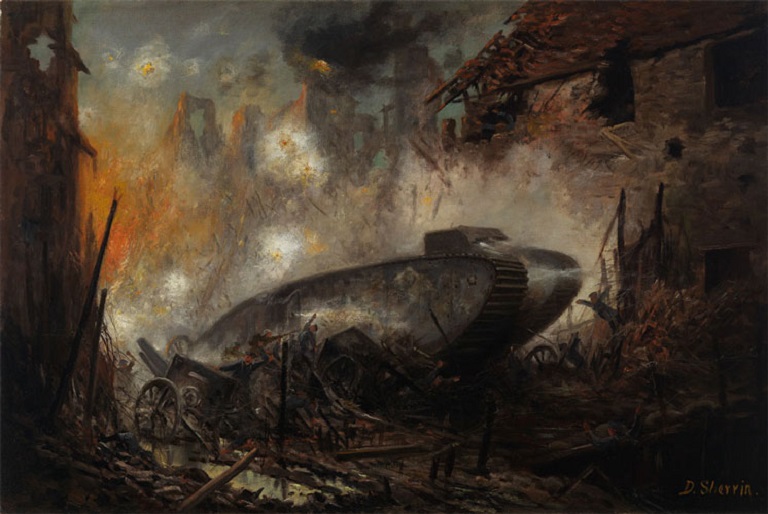 Soldier-artist Daniel Sherrin painted this work while hospitalized in London, England. He had fought at the Battle of Flers-Courcelette, France, in September 1916, when tanks were used for the first time.Daniel Sherrin © Beaverbrook / Canadian War Museum
Soldier-artist Daniel Sherrin painted this work while hospitalized in London, England. He had fought at the Battle of Flers-Courcelette, France, in September 1916, when tanks were used for the first time.Daniel Sherrin © Beaverbrook / Canadian War Museum -
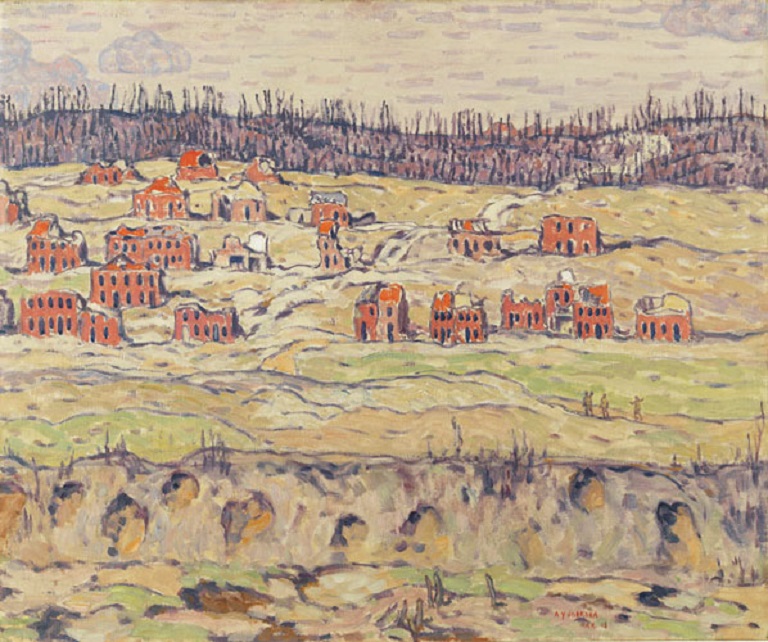 Future Group of Seven artist A. Y. Jackson painted the ruined French village of Riaumont as the fighting raged around him. Jackson enlisted in June 1915 and was wounded a year later. While recuperating he painted for the Fund.A. Y. Jackson © Beaverbrook / Canadian War Museum
Future Group of Seven artist A. Y. Jackson painted the ruined French village of Riaumont as the fighting raged around him. Jackson enlisted in June 1915 and was wounded a year later. While recuperating he painted for the Fund.A. Y. Jackson © Beaverbrook / Canadian War Museum
The first image, Tommy, by gunner and McGill student Ross Wiggs, is a cheery, even cartoony one, depicting a smiling, apple-cheeked young man who looks like he should be in high school, not wearing khaki. The exhibition progresses through four theme areas: Canadians at War, Tools of War, Ruins of War and Landscapes of War.
Just a little farther along, the tone changes, and it’s impossible not to be transfixed by the face of 20-year-old Sergeant Tommy Holmes, winner of the Victoria Cross, in a painting by Ernest Fosbery. It’s equally hard not to see a world of sadness in his eyes, which look off to the side, not meeting our gaze.
Sir Sam Hughes, the bombastic, unstable war leader who desperately wanted to be thought a military man got his wish, at least on canvas. Military artist R. Caton Woodville — no doubt under pressure — portrays his subject on a horse and looking like a field commander, a position Hughes never held.
Paintings of a German pilot falling from his burning plane in a dogfight, of a tank rolling through a hellish battlefield, and of the camouflage-painted Olympic arriving in Halifax harbour need no words to underscore the newly mechanized and increasingly deadly nature of the Great War. Neither could words adequately convey the impact of those weapons and the years of fighting, shown here with tremendous power in ruined houses and town squares, as well as landscapes of stark and ominous beauty.
Witness manages to tell the story of Canada’s war without resorting to jingoism. There is both honour and squalor here; desolation and determination; ruin and hope, all presented simply and powerfully, leaving visitors to draw their own conclusions.
Themes associated with this article
Advertisement
You might also like...

Canada’s History Archive, featuring The Beaver, is now available for your browsing and searching pleasure!

